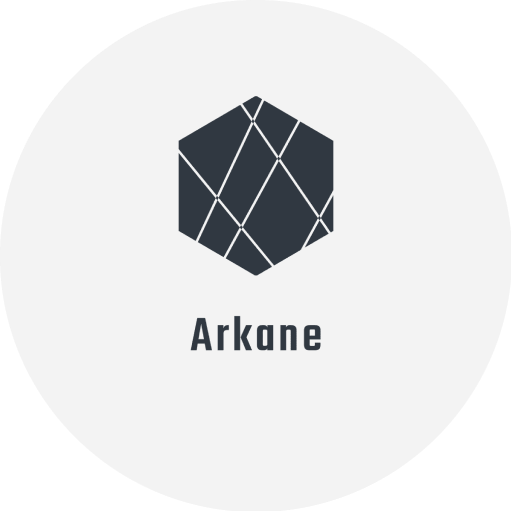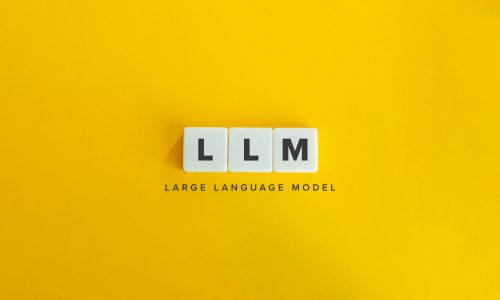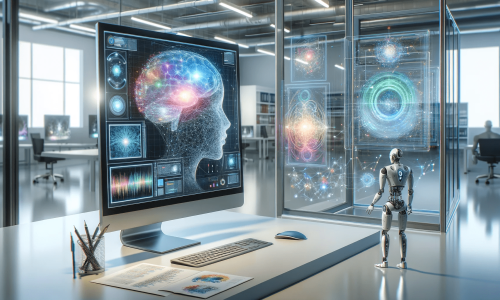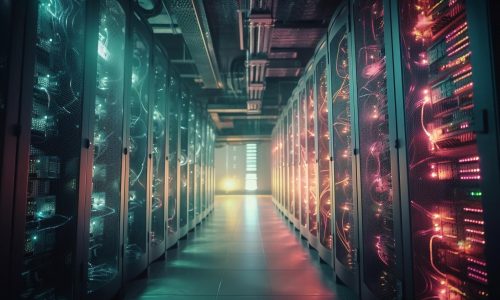
Online Ai Image Generator

Introduction to AI Image Generators
In the rapidly evolving landscape of technology, AI image generators stand out as a remarkable innovation, transforming the way we approach visual content creation. This section delves into the essence of AI image generation and its relevance in today’s tech-centric world, particularly highlighting the crucial role of Arkane Cloud in this domain.
Overview of AI Image Generation
AI image generation, a subset of generative AI (gen AI), has witnessed explosive growth in recent years. According to a McKinsey Global Survey, a significant portion of organizations are now routinely using gen AI tools across various business functions. This surge reflects a shift from AI being a niche tech topic to a central focus of corporate strategy, with C-suite executives and company boards increasingly engaging with these tools. The rise of gen AI tools like AI image generators signifies a new era in technology, where artificial intelligence is not just about automation but also about fostering creativity and innovation.
The widespread use of gen AI, particularly in AI image generation, signals its transformative potential across industries. Remarkably, three-quarters of surveyed respondents expect gen AI to cause significant changes in the nature of competition within their industries over the next three years. This expectation is particularly pronounced in sectors heavily reliant on knowledge work, such as technology and financial services, suggesting a trend towards more creative and intellectual applications of AI.
Arkane Cloud’s Role
Arkane Cloud emerges as a pivotal player in this transformative landscape. By providing GPU server solutions tailored for AI image generation, Arkane Cloud empowers users to harness the full potential of this technology. Whether it’s for AI generative art, machine learning, high-performance computing (HPC), 3D rendering, or cloud gaming, Arkane Cloud offers a versatile platform that caters to a wide array of compute needs. The availability of solutions in various forms – virtual machines (VM), containers, and bare metal – underscores the flexibility and adaptability of Arkane Cloud’s offerings. This diversity in infrastructure options ensures that regardless of the specific requirements or preferences, users can find a suitable environment to explore and leverage AI image generation to its fullest.
In summary, as we navigate the intricate world of AI image generation, Arkane Cloud stands as a crucial enabler, offering the necessary computational power and flexibility to bring creative visions to life. This section lays the groundwork for understanding the significance of AI image generation and positions Arkane Cloud as a key facilitator in this realm.
Setting Up for AI Image Generation
The realm of AI image generation offers a vast array of possibilities, and the journey begins with selecting the right tools and infrastructure. This section provides guidance on choosing AI software and leveraging Arkane Cloud’s GPU server solutions for optimal performance in AI image generation.
Choosing the Right Tools
The AI revolution in image generation, powered by advanced machine learning algorithms and neural networks, has opened up new avenues for creating detailed and visually appealing images. Key techniques like Generative Adversarial Networks (GANs) and Convolutional Neural Networks (CNNs) enable the creation of everything from landscapes to human portraits. When selecting AI software for image generation, it’s essential to consider the specific needs of your project. For instance, if the goal is to create highly detailed and realistic images, choose software that supports GANs and CNNs and offers high parameter customization. The level of AI expertise within your team, the cost of the software, and the availability of user support and community are also crucial factors.
Several innovative platforms, such as Runway ML, Deep Art Effects, Artbreeder, and DeepDream Generator, each offer unique advantages and limitations. Runway ML, for example, is known for its user-friendly interface and broad range of AI models, making it ideal for beginners and collaborative projects. DeepArt specializes in transforming images into art pieces through style transfer, while Artbreeder excels in creating hybrid images by blending multiple images together. Daz 3D, on the other hand, is particularly suitable for creating 3D models. When choosing AI software, it’s essential to evaluate your familiarity with AI technologies, project requirements, budget, and specific functions you seek.
Leveraging Arkane Cloud’s Infrastructure
Arkane Cloud’s GPU server solutions are designed to maximize the efficiency and quality of AI image generation. Whether you opt for VM, container, or bare-metal solutions, Arkane Cloud provides the computational power needed to run sophisticated AI image generation software seamlessly. The choice between VM, container, and bare-metal depends on the specific requirements of your project and the level of control and customization you need.
- Virtual Machines (VMs): VMs offer a balance of control and ease of use, making them a good choice for projects requiring a degree of isolation and customization without the complexity of managing physical hardware.
- Containers: Ideal for projects needing a lightweight, portable, and consistent environment across different stages of development and deployment.
- Bare Metal: Provides the highest level of control and performance, suitable for the most demanding image generation tasks requiring extensive computational resources.
In summary, the journey to utilizing AI image generation effectively involves carefully selecting the right software and leveraging Arkane Cloud’s robust infrastructure to meet the diverse needs of your projects. With the right tools and resources, the possibilities in AI image generation are boundless.
Creating Your First AI-Generated Image
Embarking on the journey of creating your first AI-generated image is an exciting venture that blends creativity with the cutting-edge capabilities of artificial intelligence. This section guides you through this process, ensuring a smooth and rewarding experience in AI image generation.
Understanding Prompts
The key to successful AI image generation lies in the art of crafting effective prompts. Think of a prompt as a detailed instruction to the AI, guiding it to materialize your creative vision. The quality of the output heavily depends on how precisely and descriptively you communicate your idea. Here are some pointers to consider:
- Textual Prompts: Utilize words, phrases, sentences, or paragraphs to describe your desired image. The specificity of your language plays a crucial role in shaping the AI’s output.
- Sketches and Images: In addition to textual descriptions, you can use sketches, shapes, colors, or even existing images to guide the AI in understanding your vision.
- Combining Inputs: A blend of textual descriptions and visual inputs can yield more nuanced and accurate results.
Step-by-Step Guide
Choose Your AI Image Generator: Select an AI image generation tool that aligns with your project’s needs and your team’s expertise level. Tools like Midjourney, DALL-E, or Artbreeder are popular choices.
Sign Up and Access the Tool: Follow the specific registration process required by your chosen tool. For some platforms, this might involve signing up for an account and downloading necessary applications, as seen with tools like Discord for Midjourney.
Configure Settings: Adjust the settings of your chosen AI tool. While starting with default settings is a good practice, feel free to experiment with different configurations to understand their impact on the output.
Generate the Image: Input your prompt into the AI tool and initiate the generation process. The AI will use your input data and settings to create the image, which typically appears within seconds.
Explore Variations and Upscale: Once your image is generated, explore variations or upscale the image for higher resolution, if such options are available in your chosen tool.
Download and Use the Image: Download the generated image to your computer for use in your project or portfolio.
Crafting Effective Text Prompts
Creating an effective text prompt is both an art and a science. Here are some tips:
- Descriptive Language: Use full sentences with precise details about colors, objects, and style.
- Structured Approach: Start with the image content, then detail the art form, style, artist references, and other specific elements like lighting and framing.
- Specificity: Include relevant details about the subject, composition, color palette, style, and emotion.
- Reference Images: Providing reference images can significantly aid the AI in understanding the style and composition you desire.
Fine-Tuning and Experimentation
- Iterative Process: Experiment with various prompts and styles. Be open to revising your inputs based on the AI’s outputs.
- Parameters and Settings: Each AI tool has unique parameters that can fine-tune the outcomes. Explore these settings to control aspects like image ratio, style, and level of detail.
Tips and Best Practices
- Embrace Flexibility: Be prepared to experiment with different inputs and adapt based on the outputs.
- Foster Originality: Let your creativity lead the way, using your unique style and ideas.
- Patience and Perseverance: AI image generation often involves trial and error. Keep refining your prompts and expect gradual improvements.
- Understand Your Tools: Familiarize yourself with the features and capabilities of your chosen AI tool to make the most of its functionalities.
Creating your first AI-generated image can be a fulfilling experience, blending your creativity with the power of AI. By understanding the importance of prompts, following a structured approach, and experimenting with different techniques, you can unlock the vast potential of AI image generation.
Advanced Techniques in AI Image Generation
Advancing in the world of AI image generation involves delving deeper into the technicalities and creative possibilities offered by different architectures and models. This section explores some of the most sophisticated techniques in AI-driven image generation and their practical applications.
Refining Images
Generative Adversarial Networks (GANs): GANs represent a significant leap in AI image generation. They consist of two main components: the generator, which creates images, and the discriminator, which evaluates them. The interplay between these two components leads to the refinement of generated images, making them increasingly realistic and detailed. This technique is extensively used in various industries, including fashion, where it aids in visualizing novel clothing designs, and medicine, where it assists in generating medical images for research and training.
DALL·E and Transformer Architecture: DALL·E, built on the transformer architecture, is another cutting-edge technique. It processes textual prompts through multiple layers to generate visually captivating images. This model’s ability to interpret semantics and correlate them with a vast database of text-image pairs allows for the creation of detailed and contextually relevant images. DALL·E’s application extends to various sectors, enhancing creativity and efficiency in tasks like advertising and content creation.
Integrating with Other Technologies
AI image generators are not standalone tools; their true potential is unleashed when integrated with other technologies. For example, in education, teachers can use these generators to create visual aids that complement textual descriptions, thereby enhancing the learning experience for students. In the entertainment industry, scriptwriters and creators can convert written concepts into visual prototypes, streamlining the character and set design processes.
While AI image generation offers immense benefits, it’s crucial to be aware of its associated risks, such as the potential for creating deceptive visuals or deepfakes and concerns around copyright infringements. As we embrace these advanced techniques, it is essential to balance innovation with ethical considerations and responsible usage.
In conclusion, the realm of AI image generation is replete with advanced techniques and models that open new vistas of creativity and application across various domains. From GANs to DALL·E, each method offers unique advantages, and their integration with other technologies amplifies their potential, transforming how we create and interact with visual content.
Optimizing Performance on Arkane Cloud
Optimizing GPU performance for AI image generation is a critical aspect of leveraging Arkane Cloud’s resources effectively. This section discusses best practices and strategies for maximizing GPU utilization to enhance the efficiency and output of AI image generation.
Understanding GPU Workloads: In the realm of AI and machine learning, GPUs have become essential for accelerated high-performance computing. Understanding how to manage GPU-powered frameworks is crucial. This involves handling diverse workloads from data preparation and model training to validation and inference. It’s essential to ensure that workloads run quickly and use resources efficiently, considering factors like CPU and GPU architecture, memory, and network topologies.
Leveraging Advanced GPU Systems: Utilizing advanced GPU systems like NVIDIA DGX, which are purpose-built for deep learning applications, can significantly boost AI image generation tasks. These systems are used across various industries, including government, academia, healthcare, and automotive, for their high-performance capabilities in AI-driven tasks.
Effective Workload Management and Job Scheduling: Employing workload management and job scheduling tools, such as Altair® PBS Professional® and Altair® Grid Engine®, optimizes performance in GPU environments. These tools support scheduling workloads on multiple GPU servers and multi-node GPU servers, enhancing throughput and parallel processing. They also allow for multi-instance GPU (MIG) partitioning, enabling more efficient use of GPU resources.
Optimizing Resource Use with Grid Engine: Altair Grid Engine offers robust support for scheduling GPU-aware applications and containers. It integrates with NVIDIA Data Center GPU Manager, providing detailed information about GPU resources, which aids in efficient scheduling and resource management. This level of detailed insight into GPUs on each host includes information on GPU type, memory, temperature, and affinity, which is crucial for optimizing performance and resource utilization.
Containerized GPU Workloads Management: Managing containerized GPU workloads with tools like Docker and the NVIDIA Container Toolkit within the Altair Grid Engine ecosystem enhances the management of GPU workloads. This approach ensures efficient utilization of GPU resources in containerized environments, improving overall productivity and performance.
In summary, optimizing GPU performance for AI image generation on Arkane Cloud involves a comprehensive understanding of GPU workloads, leveraging advanced GPU systems, employing effective workload management and job scheduling tools, and utilizing resources efficiently. By adopting these strategies, organizations can maximize the performance and productivity of their AI image generation projects, ensuring optimal use of Arkane Cloud’s GPU server solutions.
Integration with Cloud Computing and Arkane Cloud Services
Leveraging cloud computing for AI image generation brings a host of advantages, especially when combined with the capabilities of Arkane Cloud’s GPU solutions. This integration presents a seamless blend of computational power and efficiency, catering to the demanding needs of AI-driven tasks.
Leveraging Cloud Computing for AI Image Generation
Scalability and Cost-Effectiveness
One of the primary benefits of cloud computing in AI image generation is its scalability. As organizational workloads expand, the need for more robust computing resources grows. Cloud GPUs offer the flexibility to scale up or down easily, adapting to varying workload demands without the overhead of physical infrastructure. This scalability is crucial for AI tasks that require extensive computational power, especially for high-quality image generation. Moreover, cloud computing minimizes costs by offering GPU resources on a rental basis, charging only for the hours used, which is far more economical than investing in high-powered physical GPUs.
Efficient Resource Utilization
Cloud GPUs also alleviate the burden on local resources. Physical GPUs, when used for large-scale machine learning models or intensive rendering tasks, can significantly slow down local computers. By outsourcing computational power to the cloud, local systems are spared from the heavy lifting, allowing for more efficient use of resources. This shift not only optimizes hardware utilization but also enhances overall productivity, as teams can focus on innovation rather than being bogged down by rendering or computational tasks.
Arkane Cloud’s GPU Solutions for AI Image Generators
Enhanced Deep Learning and AI Capabilities
Graphics Processing Units (GPUs) are integral to AI and deep learning, providing the ability to perform parallel computations essential for processing large datasets. Arkane Cloud’s GPU solutions amplify this capability, offering high memory bandwidth and parallel processing computations. This environment is ideal for training AI models and handling the heavy data models typical in AI image generation. The ability to run multiple GPUs simultaneously or across different physical machines provides flexibility and efficiency for complex AI tasks.
Streamlining AI Workflows
Integrating Arkane Cloud’s GPU servers with AI image generators streamlines the entire AI workflow. From rapid iteration and faster rendering times to handling large-scale operations, the cloud GPU environment fosters an ecosystem where creativity and efficiency coexist. For AI image generation, this means quicker turnaround times, high-quality image outputs, and the ability to experiment with various algorithms and styles without the limitations of local computing resources.
In conclusion, the integration of cloud computing, particularly Arkane Cloud’s GPU solutions, with AI image generators marks a significant advancement in the field of digital creativity and AI-driven tasks. This synergy not only empowers developers and creatives with enhanced computational capabilities but also opens new horizons in efficient, scalable, and cost-effective AI image generation.
Newsletter
You Do Not Want to Miss Out!
Step into the Future of Model Deployment. Join Us and Stay Ahead of the Curve!





